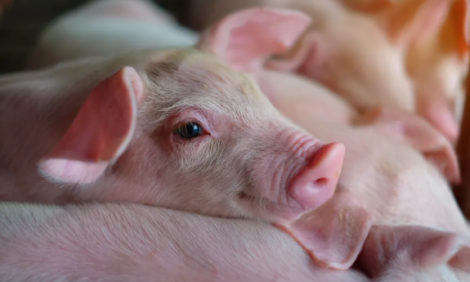



Korea Livestock and Products Annual 2007
By USDA, Foreign Agricultural Service - This article provides the pork industry data from the USDA FAS Livestock and Products Annual 2007 report for Korea. A link to the full report is also provided. The full report includes all the tabular data which we have omitted from this article.Report Highlights
Imports of U.S. beef into Korea began in earnest in July, only to face a quarantine inspection suspension in August. Despite all the starts and stops, it is expected that Korea will import approximately 30,000 tons of U.S. boneless beef this year bringing total imports to 280,000 tons. Imports of pork and pork products in 2008 are expected to decrease by about 50,000 tons in 2008. Increase in beef imports and consumption will drive the drop in pork imports.
Swine and Pork Situation
Imports of pork and pork products in 2008 are expected to decrease by about 50,000 tons in 2008. Increase in beef imports and consumption will drive the drop in pork imports.
Production
Since the ban on U.S. beef in 2003, domestic and imported pork suppliers have enjoyed a prosperous market with relatively little competition. Total swine stock numbers increased to capture the increase in demand for pork. Despite the problems with the import health protocol, U.S. beef imports have been increasing, causing swine prices to decline. Among swine producers, it is widely anticipated that U.S. beef imports will continue to grow and in response it is expected that they will sell more stock. According to one survey, producers plan to increase their slaughter sales by seven percent over the July 2007 level. Given that the slaughter level of swine during the first seven months of 2007 is already seven percent higher than the same period in 2006, total 2007 slaughter is projected to increase significantly. As U.S. beef imports continue to increase in 2008, we could see this increased slaughter trend continue.
Factors that will have an impact on the producer's decision are reflected in a survey conducted by the Korean Rural Economic Institute (KREI) in August 2007. KREI asked 288 farmers what factor would have the highest impact on domestic pork and 30.6 percent said the import of U.S. short-rib beef. Other responses were ratification of the FTA (30.2 percent), increased feed prices (18.4 percent), swine diseases (11.1 percent), swine manure treatment (8.7 percent), and others (1.0 percent). Although this survey indicates that producers are most concerned with imports of U.S. beef, we predict that increased feed prices as a result of biofuel production will have a greater impact in the future.
In the absence of a new health protocol for U.S. bone-in beef and the FTA ratification, pork production numbers reflect producer's current practice of gradually reducing their inventory levels. The increase in 2008 pork production is the result of increased slaughter levels.
Consumption
As beef prices soared after the December 2003 ban on U.S. beef, consumers shifted to pork consumption. However it is expected that consumers will decrease their consumption of pork in the future. In order to promote domestic pork consumption, the Korea swine industry has been aggressively advertising pork through funds raised by the pork check-off program. The Korea Swine Association plans to collect 5.2 billion won this year and the Korean government will provide an additional 5 billion won worth of support. Out of these funds, the Korean swine industry will conduct promotions and provide educational information to consumers.
Trade
Pork imports have continued to increase to capture the demand for pork in the past few years; however, it is forecast that imports will drop from 400,000 tons to 350,000 tons to reflect decreased demand. The United States is the largest supplier of frozen Boston butt, pork ribs, and chilled pork bellies. Belgium was the largest supplier of frozen pork bellies. Chilled pork accounted for only 3.4 percent of total pork imports in 2006. The portion of chilled pork imports during the first seven months of 2007 increased to 5.6 percent.
Policy
Aside from providing supplemental support to the pork check-off program, the Korean government is providing additional support to pork producers as follows:
- Manure Treatment: The Ministry of Agriculture and Forestry (MAF) is planning to support a joint manure treatment study in order to ban the disposal of livestock manure in the ocean by 2012. The total amount of manure that was discarded in the ocean in 2006 was 2,607,000 tons. MAF plans to reduce this amount by 500,000 tons every year up to 2011. In order to fulfill this goal, it will provide annual support of over 60 billion won for constructing joint livestock manure treatment facilities. Through such support, it plans to construct a total of 70 manure treatment facilities by 2011.
- Antibiotic Free Pork: The government is implementing strict new regulations for recognizing antibiotic free pork. This program is still in its initial stage and out of a total of 78 cases of antibiotic free certifications; three cases were of swine farms. As consumers continue to be health-conscious, the demand for these types of meats will increase. However, this regulation is so strict that the U.S. industry will have difficulty complying with these regulations. The U.S. government is working with the Korean government to address this problem.
- Insurance: On June 2007, the Korean government approved a civilian company to sell insurance policies for livestock farmers. Cattle, swine, horse, poultry and barns are eligible for this insurance program. The government has budgeted a total of 34.6 billion won in 2007 to provide support to farmers that wish to purchase the insurance. Through this budget, it will provide 50 percent of the cost for purchasing the insurance policy and have the farmers pay for the remaining costs.
Further Reading
|
|
- You can view the full report, including tables, by clicking here. |
List of Articles in this series
To view our complete list of 2007 Livestock and Products Annual reports, please click hereOctober 2007








